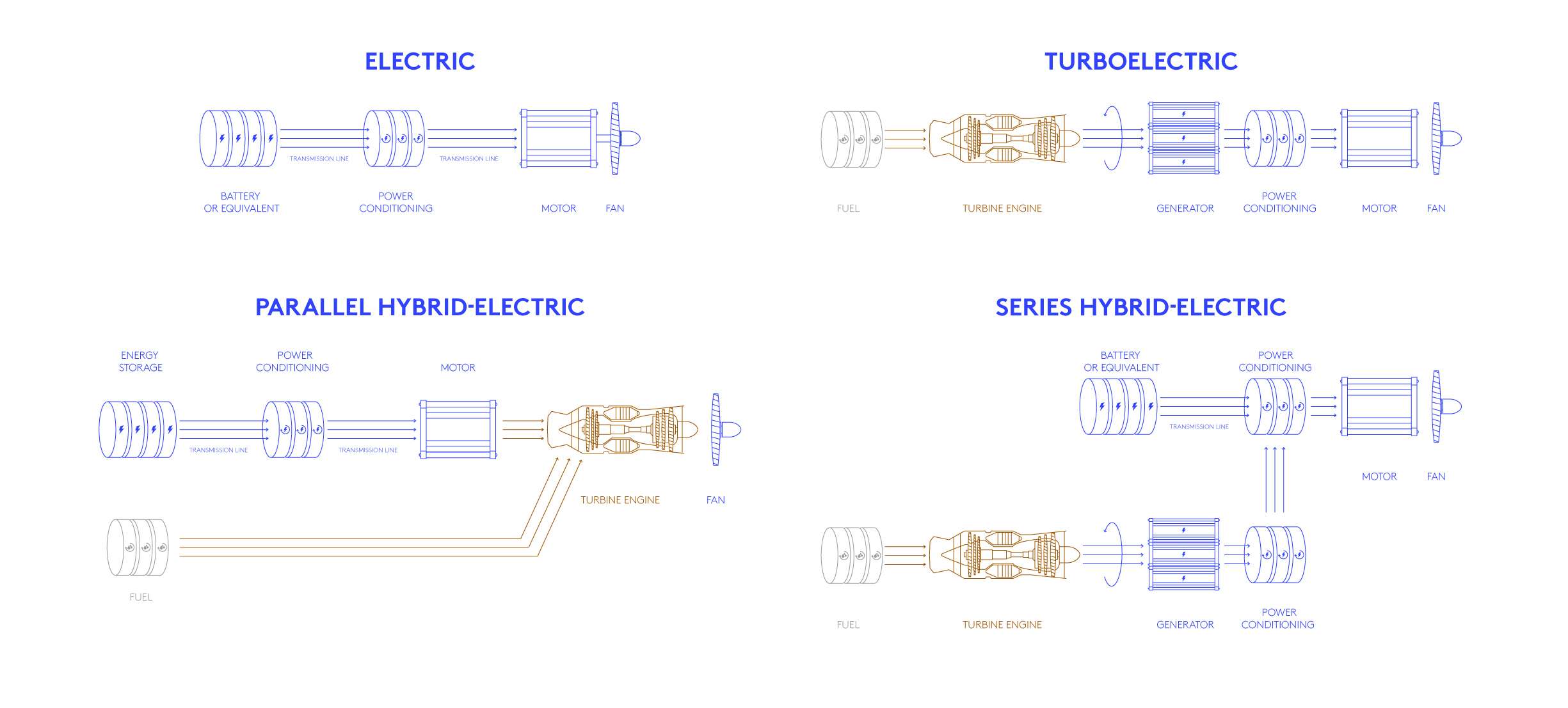Context
Future Propulsion and Integration:
Towards Hybrid-Electric Aircraft
Background
- Aligning commercial aviation with the COP21 target: ΔT < 2°C
- Critical need for disruptive technologies beyond incremental technology improvements
Challenge
- Developing hybrid-electric propulsion and integration technologies
- Developing a roadmap for key enabling technologies
Why Hybrid-Electric
Propulsion ?
Fully electric aircraft would be an appealing solution to eliminate CO2 emissions. However, building a fully electric commercial aircraft would require a step beyond the highest battery performance anticipated in a predictable future (densities in the range from 500 to 600 Wh/kg are beyond current R&D effort, while more than 750 Wh/kg would be required for a B737 to transport 150 PAX over 900 nm).
Partial electrification through hybridisation, combing electric and thermal engines and energy sources, is an intermediate step offering extended degrees of freedom for optimising the aircraft performance and reducing fossil fuel consumption. Various concepts with different hybrid propulsion architectures can be envisaged.
A broad variety of concepts and architectures:

- A parallel hybrid-electric architecture could provide electric boosts from batteries to thermal engines during parts of the flight, allowing to optimise gas turbine performances throughout the mission profile, and in particular for cruise.
- Electricity production on board the aircraft with turboelectric architecture opens the way to distributed electric propulsion, which allows to implement innovative propulsion integration to develop synergies with the airframe.
For example:
- Blowing the wing to increase lift at low speed and optimise the wing size for cruise (e.g. NASA X-57);
- Increasing effective by-pass ratio (BPR, which increases propulsive efficiency) and reducing individual propulsor diameter (this facilitates integration of propulsion with high BPR)
- Boundary-layer-ingestion (BLI e.g. in CENTRELINE project)
- Additional use of propulsion, for example for control (removing or reducing empennages)
- Multiple variants could be envisaged mixing batteries and turbo-generators, leading to series hybrid architectures, which can be combined with the above-mentioned integration of the propulsion system (e.g. batteries can be used to absorb energy demand peaks or to power engines during certain flight phases).